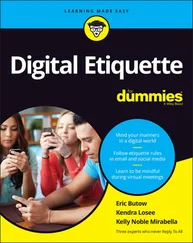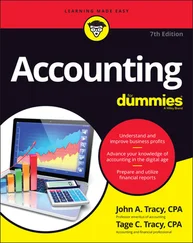Kenneth W. Boyd - Cost Accounting For Dummies
Здесь есть возможность читать онлайн «Kenneth W. Boyd - Cost Accounting For Dummies» — ознакомительный отрывок электронной книги совершенно бесплатно, а после прочтения отрывка купить полную версию. В некоторых случаях можно слушать аудио, скачать через торрент в формате fb2 и присутствует краткое содержание. Жанр: unrecognised, на английском языке. Описание произведения, (предисловие) а так же отзывы посетителей доступны на портале библиотеки ЛибКат.
- Название:Cost Accounting For Dummies
- Автор:
- Жанр:
- Год:неизвестен
- ISBN:нет данных
- Рейтинг книги:4 / 5. Голосов: 1
-
Избранное:Добавить в избранное
- Отзывы:
-
Ваша оценка:
- 80
- 1
- 2
- 3
- 4
- 5
Cost Accounting For Dummies: краткое содержание, описание и аннотация
Предлагаем к чтению аннотацию, описание, краткое содержание или предисловие (зависит от того, что написал сам автор книги «Cost Accounting For Dummies»). Если вы не нашли необходимую информацию о книге — напишите в комментариях, мы постараемся отыскать её.
Cost Accounting For Dummies
Cost Accounting For Dummies
Cost Accounting For Dummies — читать онлайн ознакомительный отрывок
Ниже представлен текст книги, разбитый по страницам. Система сохранения места последней прочитанной страницы, позволяет с удобством читать онлайн бесплатно книгу «Cost Accounting For Dummies», без необходимости каждый раз заново искать на чём Вы остановились. Поставьте закладку, и сможете в любой момент перейти на страницу, на которой закончили чтение.
Интервал:
Закладка:
Cost of sales is the direct costs of creating your product. (See the direct and indirect cost section of Chapter 2.) If you were manufacturing denim jeans, you would have material costs for the denim and thread (and maybe a zipper), as well as the labor costs to sew the jeans. Your gross margin per pair of jeans sold might look like this:
Gross margin = sale price – cost of sales (material and labor)
Gross margin = $60 – $25
Gross margin = $35
Contribution margin (sales less variable costs) is part of the target net income formula. Try to avoid confusing the gross margin with contribution margin. The terms look similar, and both are thrown around in accounting conversations. Contribution margin is sales less variable costs. Gross margin, on the other hand, is sales less cost of sales.
Using operating leverage
The degree of operating leverage is a formula that shows how well you’re using your fixed costs to generate a profit. The more profit you can generate from the same amount of fixed cost, the higher your degree of operating leverage.
Here’s the formula:
Degree of operating leverage = contribution margin ÷ profit
Profit = contribution margin – fixed costs
You already covered the component parts that make up this formula. To refresh your memory, see the section “ Calculating the breakeven point” and the section “ Contribution margin: Covering fixed costs.”
First, calculate the contribution margin. Use the number of units from the target net income discussion above:
Contribution margin = sales – variable costs
Contribution margin = $40 × (150 units) – $20 × (150 units)
Contribution margin = $20 × (150 units)
Contribution margin = $3,000
Use the degree of operating leverage formula to compute the degree of operating leverage:
Degree of operating leverage = contribution margin ÷ (contribution margin – fixed costs)
Degree of operating leverage = $3,000 ÷ ($3,000 – $1,000)
Degree of operating leverage = $3,000 ÷ $2,000
Degree of operating leverage = 1.5
Degree of operating leverage can also be defined as contribution margin divided by profit. It’s saying the same thing. All the calculations simply amount to this statement: “At sales of 150 units, contribution margin is 1.5 times profit.”
You also can use the degree of operating leverage formula to assess the relationship between costs and profit. If you minimize your fixed costs, you increase your profit. Even better, you can earn more profit without changing your sale price, contribution margin, or units sold.
Here is how the degree of operating leverage looks if fixed costs were only $500:
Degree of operating leverage = $3,000 ÷ ($3,000 – $500)
Degree of operating leverage = $3,000 ÷ $2,500
Degree of operating leverage = 1.2
The ratio went down from 1.5 to 1.2. Now contribution margin ($3,000) is 1.2 times profit ($2,500). Contribution margin did not change. Because fixed costs went down, profit increased.
What if fixed costs went down to zero? Contribution margin/profit would be 1, and that’s a trophy position! Your entire contribution margin goes toward profit.
Assessing e-commerce businesses
A growing percentage of businesses operate as e-commerce firms. As explained in Chapter 2, e-commerce companies sell products and services online, not in physical store or site locations. Have you recently bought a gift for someone online? Yeah, me too. E-commerce is here to stay, and the cost structure is different from brick-and-mortar businesses.
Reviewing how e-commerce works
First, the good news: You don’t have to pay for a physical store location, and most e-commerce businesses don’t need a warehouse to store inventory. Instead, a supplier packages and ships orders on your behalf and takes a fee.
The e-commerce challenge is getting a consumer’s attention and interest, and creating a smooth process to place an order. How you generate interest determines your marketing costs. E-commerce firms write blog posts, create videos, and run online ads to attract customers.
Here’s an example of what I mean. Every ten years or so, my wife insists on buying me new casual clothes. I prefer the Steve Jobs approach of wearing the same thing every day, but that’s not allowed. All the shirts, pants, and shoes are shipped to the house (who’s gonna pay for all this stuff?!) The seller’s marketing efforts got her attention, and she visited the website.
Once a customer visits the website, the seller has to keep the buyer engaged. The site must be easy to navigate, and should include great images of clothing for sale. In addition, the ordering and payment process must be quick and simple, or the customer will go elsewhere.
 E-commerce firms should measure the cost of order abandonment, which occurs when a customer completes an order form online, but does not finish the process and make a payment. The retailer must remove the pending order after some period of time, and you need a system to confirm that the individual doesn’t intend to come back and place the order. The seller must also ensure that inventory levels are not changed, and that no sale is posted. These steps require time and money.
E-commerce firms should measure the cost of order abandonment, which occurs when a customer completes an order form online, but does not finish the process and make a payment. The retailer must remove the pending order after some period of time, and you need a system to confirm that the individual doesn’t intend to come back and place the order. The seller must also ensure that inventory levels are not changed, and that no sale is posted. These steps require time and money.
Online retailers spend big on websites, product images, and online checkout integration. They also pay people to write content, and to create videos. That addresses the cost side of things, now what about pricing?
 E-commerce businesses often face heavy competition, and that limits the ability to raise prices. My wife, for example, could have bought the same clothes from a number of different websites. The seller’s brand reputation and the high level of customer service ultimately drove her buying decision. (I still don’t think I need the new outfits.)
E-commerce businesses often face heavy competition, and that limits the ability to raise prices. My wife, for example, could have bought the same clothes from a number of different websites. The seller’s brand reputation and the high level of customer service ultimately drove her buying decision. (I still don’t think I need the new outfits.)
Applying the CVP formula
Now, consider how the e-commerce business model fits into the CVP formula. You’ve seen throughout this chapter how useful CVP can be, and you can use it for online selling too. To explain, I’ll address each component of the formula.
Not having a physical store location saves money, but e-commerce sellers often pay a fixed monthly cost for IT services. Keeping the website up and running is priority number one, and you need reliable experts to help you. Technology expenses may end up in the fixed cost bucket.
Vary your spending on marketing based on the strategy you implement. Many businesses are seasonal, and you may spend more to get attention when consumers start shopping. If you sell baseball gear, for example, you’re gonna ramp up marketing before the baseball season starts.
E-commerce firms can experience huge swings in demand, and that impacts sales and costs. If an article explaining your product goes viral, sales may spike, and that increases your cost of sales (a variable cost). Head over to Chapter 9to learn more about capacity issues and costs.
 You may find it difficult to increase prices (see earlier in this chapter to find out why). That viral article may boost sales, but increasing prices may give your customers indigestion. Mull over these key points, if you operate an e-commerce business.
You may find it difficult to increase prices (see earlier in this chapter to find out why). That viral article may boost sales, but increasing prices may give your customers indigestion. Mull over these key points, if you operate an e-commerce business.
Timing is everything when it comes to costs
Интервал:
Закладка:
Похожие книги на «Cost Accounting For Dummies»
Представляем Вашему вниманию похожие книги на «Cost Accounting For Dummies» списком для выбора. Мы отобрали схожую по названию и смыслу литературу в надежде предоставить читателям больше вариантов отыскать новые, интересные, ещё непрочитанные произведения.
Обсуждение, отзывы о книге «Cost Accounting For Dummies» и просто собственные мнения читателей. Оставьте ваши комментарии, напишите, что Вы думаете о произведении, его смысле или главных героях. Укажите что конкретно понравилось, а что нет, и почему Вы так считаете.












